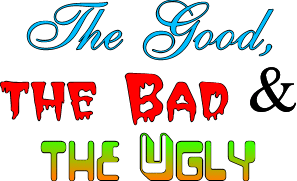|
Name
|
Comments
|
Quality
|
Classic
status?
|
|
RMI
ElectraPiano, Rock-Si-Chord etc.
|
The first and best of an otherwise mediocre
bunch. Many models from 1968 to late seventies.
Harpsichord and "lute" sounds were best, but straight
piano sound was also punchy and distinctive. No touch
sensitivity. "Organ" mode extended decay time. Used by Rick
Wakeman, Sparks, Genesis, Ray Manzarek (possibly)
and many others. |
***
|
***
|
| Multivox, Univox(?) |
American importers' brand names applied
mostly to Italian-made Crumar instruments (see Crumar) |
**
|
*
|
|
Crumar
Compac, Compac II,
Roadrunner,
Roadracer,
Roady etc.
|
The archetypal early '70s to early '80s
electronic pianos. Budget-priced, very portable (George
Duke used one as a strap-on, as did Edgar
Winter) but with bland, unmemorable sounds.
Usually had three sounds, vibrato and tuning control.
Roady had additional vibes sound; Roadracer was only
model with touch sensitivity. Legend has it that the
Beatles used a Crumar for the intro of "Lucy In the
Sky...". They didn't. THAT was a Lowrey organ, and
besides, electronic pianos didn't exist then. Late
models were marketed in the UK as "Chase" rather than
Crumar. |
**
|
*
|
|
Hohner
International
(HI-Piano)
|
Not even distantly related to Hohner's
famous Clavinet, Pianet and Electra-Piano models, these
are typical Italian pianos (possibly made by Crumar) but
housed in very heavy, road-worthy (German-made?)
Clavinet E7-style cases. Some models have additional
string and synth sounds. |
***
|
*
|
| Armon (Selmer-Armon) |
These were among the cheapest, nastiest
instruments ever made. I speak as someone who had to
struggle with one of these turkeys at school in the late
70s. Bent aluminium cases, flimsy keyboards, noisy
electronics, wobbly stands and fizzy sounds, plus lack
of a tuning control on the model I used were some of the
many reasons to avoid this one. Oh, and the fact that it
burst into flames during a rehearsal. |
*
|
*
|
| Cordovox |
Suspiciously similar to the Selmer-Armon in
having sliders for the 3 equally dismal sounds. Some
were mounted in Cordovox's famous "White Elephant"
plastic cases; others in ordinary wood-grain boxes. Moog
may have been partly responsible for the fabled CDX
organ; I very much doubt whether they even KNEW about
this thing. |
*
|
*
|
ARP 4-Voice,
16-Voice |
Among the most acoustic-sounding electronic
pianos. These were made just before the ill-fated
takeover by CBS/Fender/Rhodes which resulted in the
eventual demise of ARP. The 4-Voice (the name referred
to available sounds, not polyphony) is a good
work-horse, while the 16-Voice has a lot of
"clever-clever" preset effects (trills, arpeggios etc.),
but not much more that's actually usable.
Touch-sensitive, weighted keyboards. |
***
|
**
|
| Rhodes
Electronic Piano |
When CBS bought the ARP synthesiser company
in the early 80s, ARP had just produced its first two
electronic pianos, the "4-Voice" and the "16-voice". The
Rhodes Electronic Piano was a similar design, including
a touch-sensitive weighted keyboard. However, a Rhodes
worthy of its name it was not. |
***
|
**
|
| Kustom 88 |
Does exactly what it says on the tin.
Actually, this was a pretty good one-sound piano with a
nice 88-note weighted touch-sensitive keyboard and a
sound not dissimilar to that of the old RMI. At
the time (early '80s) it would have been a good cheap
alternative to a Yamaha electric grand. Today a Casio
will give a better acoustic piano sound. |
***
|
*
|
|
Yamaha CP-20 CP-30,
CP-25,
CP-35
|
Despite their names, these were in no way
related to Yamaha's classic CP-70 electric grand
and its successors. However, they WERE
better-than-average electronic pianos, if you wanted
something that didn't sound like an electric or an
acoustic. All featured selectable waveforms and
adjustable decay for a wide range of possible sounds.
The CP-30 and CP-35 also featured tuneable independent
dual output channels. The CP-25 and CP-35 were later
models with extra waveforms and effects. The CP range
were among the first electronic pianos to feature
weighted touch-sensitive keyboards. Good but VERY heavy.
Used by Elton John, Christine McVie, Dr John and
others. |
***
|
***
|
|
Yamaha
pf-10,
pf-15,
pf-70,
pf-80
|
These were Yamaha's last electronic (rather
than digital) pianos, although they did in fact use
digital FM synthesis (like the DX series synthesisers).
The sounds aren't bad, in a DX-7-ish way, and all but
the pf-10 have weighted keyboards and built-in speakers.
Very "1980s" instruments, but here in the UK jazz
musicians seem to like them (or perhaps they can't
afford anything better?) The pf-70 and pf-80 have more
sounds, plus MIDI. Later pf-85 is digital. |
***
|
**
|
